Wild Horses at North Carolina Outer Banks (Part 2)
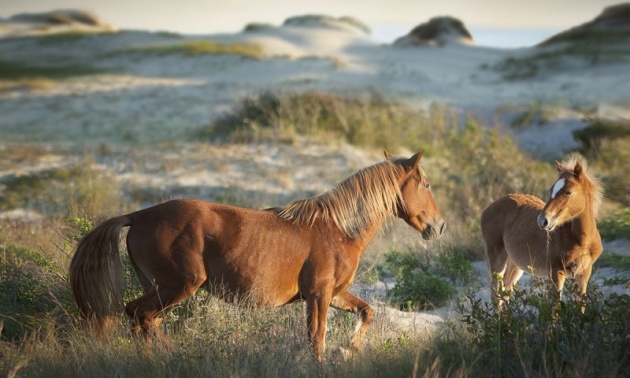
(IMAGE SOURCE: google)
This is in continuation of my previous Blog about the Corolla Mustangs at North Carolina (NC) Outer Banks. The focus of this Blog will be on the remaining two breeds of wild horses found on the coastline here in NC. I will discuss a). The Beaufort Wild Horses and b). The Ocracoke Wild Horses. Both of these breeds of wild horses are related to their not so distant cousins (i.e. Corolla Wild Mustangs and Shackleford Mustangs mentioned in part 1).
Brief History:-

(IMAGE SOURCE: google)
500 years ago wild horses use to roam freely, using land bridges to cross into uncharted territory in different parts of the world. In the North America the wild horses were brought by the early Spanish explorers. Because these early explorers had to traverse across different terrain, they needed a sturdy, strong horses that could carry their belongings as well as cross through forests and deserts. The early Spanish explorers arrived on the Spanish Mustangs near what is now known as "Cape Fear, NC", but their stay did not last long as the Native Americans were displeased to discovered their ulterior motives and the uprising caused the Spaniards to abandon their belongings and retreat to their stronghold in Florida.
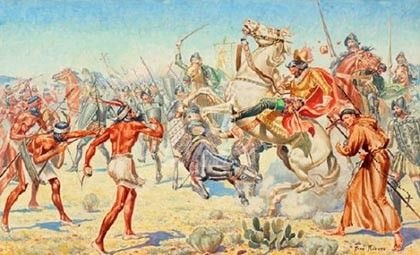
(IMAGE SOURCE: google)
The wild horses brought by the Spaniards roamed freely on the open coastline of North Carolina until 1980s, when a highway "NC12" was built near the North Carolina beach. The highway brought explosive development which threatened the wild horses existence. Luckily, some non profit organizations worked in cooperation with the National Seashore Service in NC to provide some protected land for these beautiful creatures. The Corolla Mustang's herd is kept in between 100 and 120 wild horses and occasional adoption is permitted from time to time.
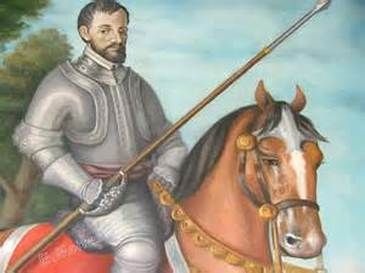
(IMAGE SOURCE: google)
Beaufort Wild Horses:-
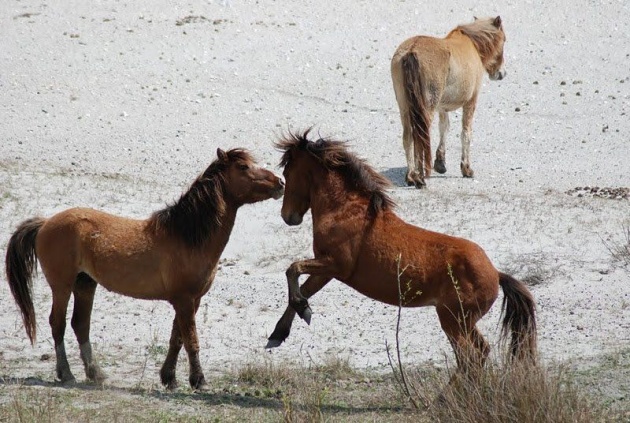
(IMAGE SOURCE: google)

(IMAGE SOURCE: google)
Theses horses are not direct descendants of the Corolla mustangs like the "Shackleford Mustangs". These wild horses are descended from a stock kept on the island by the Beaufort doctor who then owned the land. Though Beaufort Wild Horses are considered as "feral" they do exhibit some of the same characteristics as the Corolla Mustangs or the Shackleford Mustangs. In fact, some of the Beaufort Wild Horses have the share primitive markings of the most ancient wild horses and types. These markings consist of a "dorsal stripe" or a spinal stripe that runs from ear to tail or some times "leg bars" as well. Theses wild horses have a free run of main area of the Rachel Carson Estuarine Reserve. The Reserve is made up of three locations i). Town Marsh, ii). Horse Island, iii). Carrot Island and iv). Bird Shoal. These islands in the Reserve surround a delta with thick marshes and this is where the Beaufort Wild Horses spend much of their time grazing the grass that grows here in profusion. The reserve islands are not suitable for human habitation as there is extremely little fresh water, which the wild horses have to dig to find it.

The "Spinal Stripe" marking
(IMAGE SOURCE: google)
Spotting Beaufort Wild Horses:-
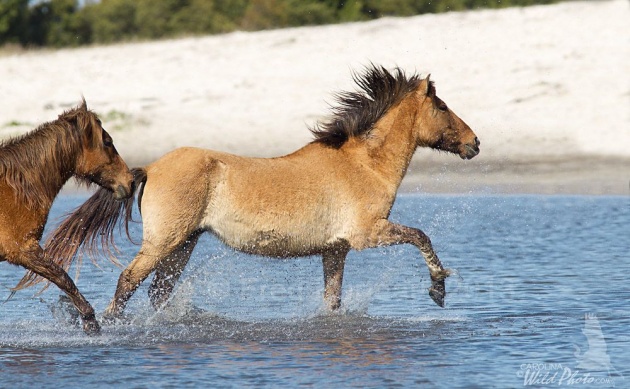
(IMAGE SOURCE: google)
Visitors need a boat to get to the sand dunes of the Reserve island to watch the Beaufort Wild Horses. To venture into the shallow marsh requires a small boat, and during high tides it is possible to kayak across the tidal flats to Bird Shoal. The Delta where theses horses often spend their time also hosts a variety of bird species, and once the visitors are on the island they can simply hike about to find the horses. The abundance of wildlife, Birds and horses makes these islands ideal for birdwatching and wildlife photography.
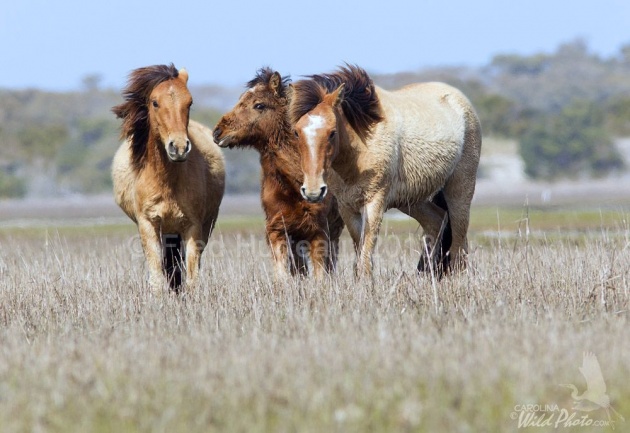
(IMAGE SOURCE: google)
Ocracoke Ponies:-
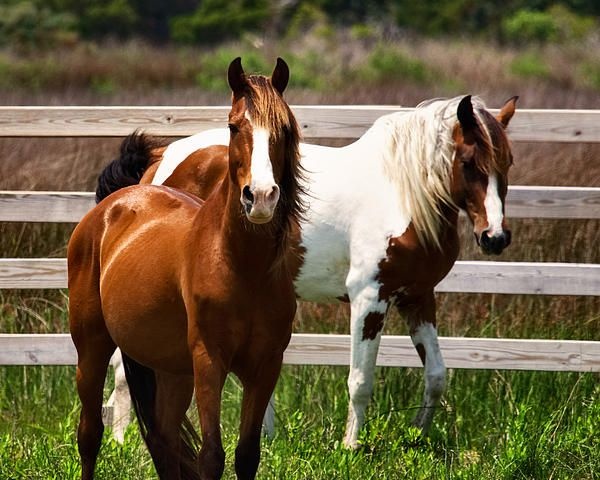
(IMAGE SOURCE: google)
These are not "Ponies" but real True horses. The Ocracoke Ponies are descendants of the Spanish Mustangs like the Shackleford Mustangs and Corolla Mustangs. Their unique characteristics include, one fewer lumbar vertebrae, one fewer rib, large forehead, greater bone density and short but strong necks. There were as may as 300 Ocracoke Ponies in the 1950s, that number has drastically fallen since. In the 1970s and 1980s the Cape Hatteras National Seashore Park Service started a program to help the wild horses by capturing, taming and caring for them. Also, sometime in 1959 or 1960 the Park Service designated 180 Acres of land to be fenced for the protection of the Ocracoke Ponies from the newly constructed highway NC 12 and also to protect the island from overgrazing.
Spotting Ocracoke Ponies:-

(IMAGE SOURCE: google)
Fortunately for the visitors they do not need to take a ferry to watch these wild horses. There are two designated areas known as "Pony Pens" located on Highway NC12 between Hatteras Inlet Ferry and Ocracoke Village for viewing. There are only 17 ponies/horses in the Ocracoke Ponies herd. Visitors are not allowed to pet the animals or reach the animals and visitors can not see much without climbing the viewing stand, which is not permitted by the park rangers. Unfortunately, the viewing is nothing special for the admirers because of the large fenced structure built to keep the horses safe. But all that fencing for so few horses takes away the excitement from the visitors and also takes away any illusion of Ocracoke Ponies being "wild".


(IMAGE SOURCE: google)



